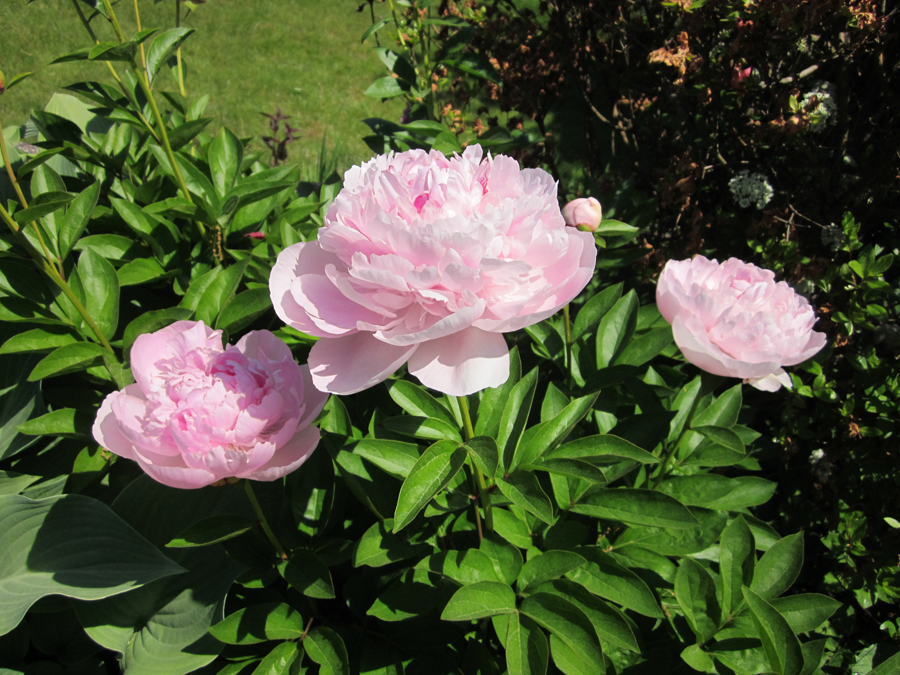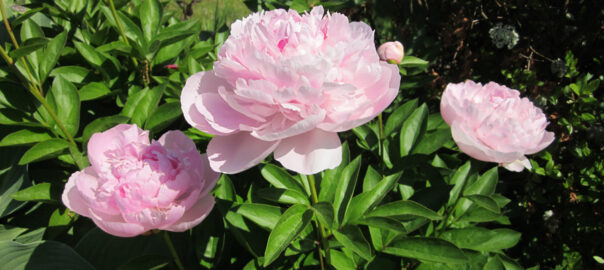
Our peony plants have reached their blooming peak this season and we’re always sad to say goodbye to their beautiful, fragrant blossoms.
Native to China and the European coasts of the Mediterranean Sea, the peony derived its name from Paeon, known as a physician to the Greek gods.
Today, peonies are a popular choice for floral arrangements and wedding bouquets. They are said to represent good fortune.
What I didn’t know until recently was that peony roots, seeds, and petals have been used for thousands of years all over Europe and Asia in treating epilepsy, migraines, asthma, and other medical issues.
We are told that there are three different types of peonies: herbaceous peonies, tree peonies, and intersectional (also called Itoh peonies).
Herbaceous peonies are perennials that die back to the ground each fall. That is the type that we grow in our garden.
Tree peonies are woody, shrub-like peonies that lose only their leaves in the fall.
Intersectional peonies are a cross between herbaceous and tree peonies. First bred in the 1940s by the Japanese horticulturist Dr. Toichi Itoh, they are also known as “Itoh” peonies.
With 40 species and more than 6,500 cultivars and hybrids, peonies come in many colors including pink, white, red, yellow, purple, orange and multicolored.
The flower types include single, double, bomb, anemone and others. Sun-lovers, they require at least 6-8 hours of direct sunlight daily.
Ants can be found crawling over the buds enjoying the nectar, but they are not necessary in order for the petals to open.
We are told that the ants can actually kill off insects such as thrips that can damage the buds. When all the nectar has been consumed, the ants will depart.
To encourage larger blooms, we’ve been removing all but one bud per stem. Having become a bit lazy, we have not been using the grow-through support cages that help keep the stems upright, especially during heavy rains.
This was a big mistake for sure since recent showers knocked them down. The one benefit was enjoying some of the fragrant blossoms in vases indoors.
When the peonies are no longer flowering, the healthy plants can add interest and diversity to the garden. Taking good care of them throughout the summer ensures that abundant blooms will be enjoyed the following spring.
In the fall, after the foliage dies down, the stems are cut down to the ground. Thankfully, peonies don’t spread out like so many other perennials do.
Peonies can produce beautiful blooms every spring for decades — even generations. And according to horticulturists, the plants can live at least 100 years.
Enjoy!

